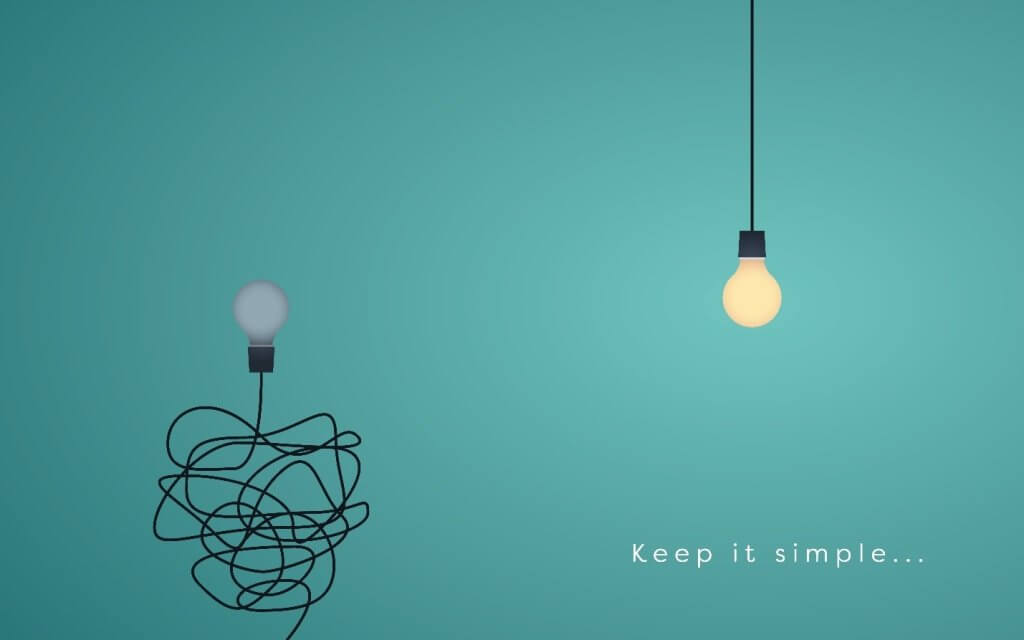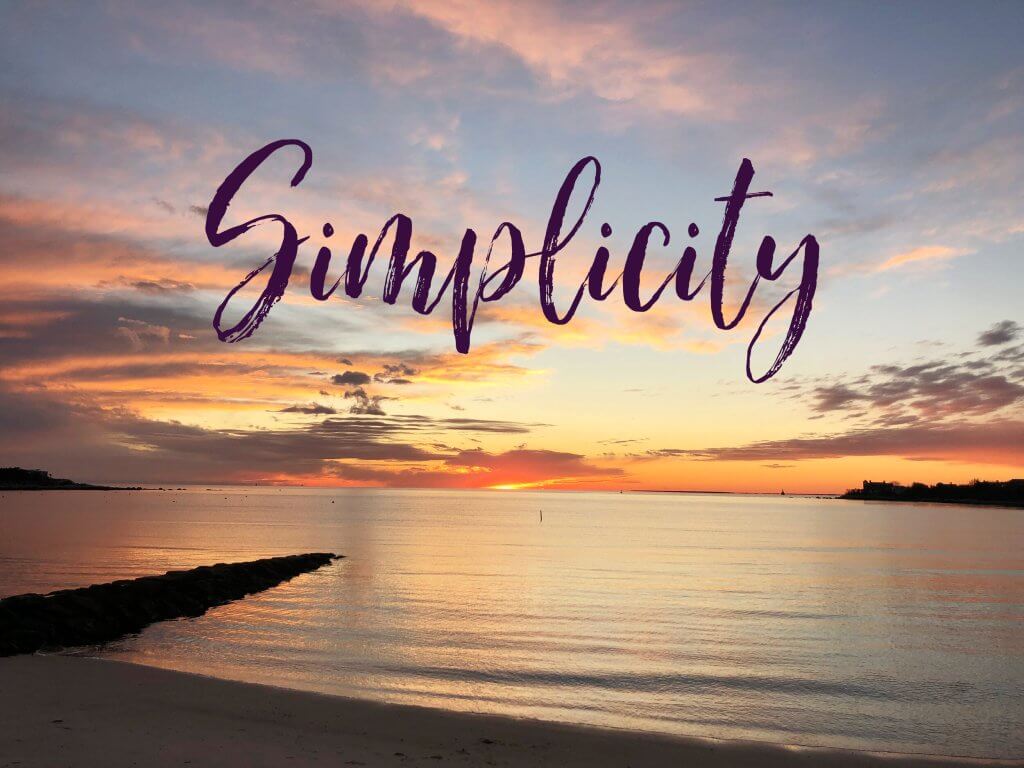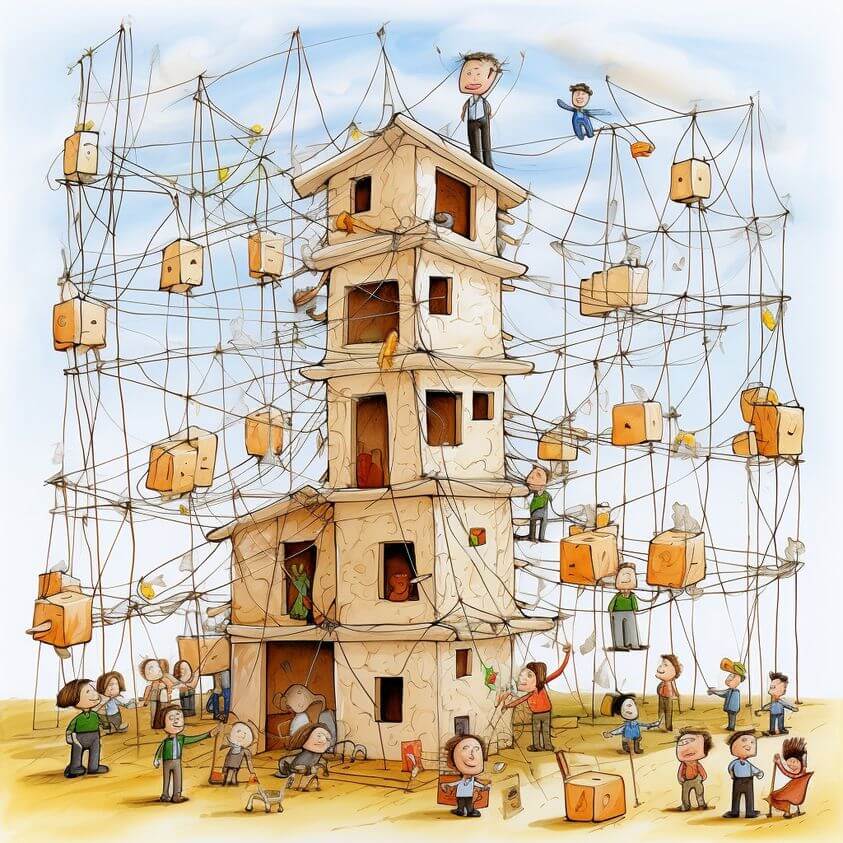 Simplify Your Life to Go More Deeply into Your Life Purpose
Simplify Your Life to Go More Deeply into Your Life Purpose
We are currently seeing a strong trend towards simplification and downsizing of our lives after years of materialistic living. Perhaps it was the downward spiral of the economy in the early 21st century that caused this equal and opposing reaction. Or, maybe it is coming about simply because we are wising up—that having a lot of stuff doesn’t make us happy. In fact, it does the opposite. It jams up our happiness factor. It clutters our homes and minds. I discovered that when you simplify to go more deeply into your life purpose, your life truly begins to make sense.
You don’t have to be invited to star on Hoarders to question the amount of stuff you are hanging onto. Too much stuff becomes clutter when it gets in your way—in the way of understanding your finances, in the way of locating important computer files or literally in the way, as you trip over stuff when you get up in the middle of the night.
So you’d like to simplify your life. But where should you start? Some people never get started because they are overwhelmed by all of the excess in their lives. Everywhere they turn is more stuff—in their inbox, in their computer files, in their closets… everywhere. But you have already started the process of simplifying your life by picking up this eBook! In it, you will find tons of practical suggestions of ways you can make life simpler and less cluttered.
Most of us have started simplifying our lives and environments at one time or another but have given up because getting rid of things made us feel emotions we didn’t want to feel. These feelings could include anger at ourselves for the money we wasted on products we have never used or guilt about getting rid of something because it was a gift from someone we love. Everyone feels these types of emotions when decluttering—it’s not just you.
In 2012, Yale University released their findings on how purging tangible objects affects us on an emotional level, and they will no doubt surprise you. They discovered that there are two parts of the brain—the anterior cingulate cortex and the insula—that react to psychological pain and conflict but are also stimulated when the individual is told to get rid of possessions that they are emotionally connected to. These are the same parts of the brain that react when an addict has a craving, so it can truly be intense. The stronger the conflict of emotion on whether or not to trash an item, the stronger a reaction neuroscientists see in those two parts of the brain. So, if you’ve felt that giving up some of your stuff is painful, it truly is! However, science has also proven that it is totally worth enduring the pain of letting stuff go to refresh your life!
Physical clutter creates all types of problems for our brains. Have you ever needed to buckle down and get something done, but found that you felt the compulsion to tidy up your work area first? Although this could be seen as a way to procrastinate getting the work started, it’s even more likely that your brain just couldn’t deal with the clutter your eyes could see as you tried to work. This is even truer if the project was complicated or you had negative thoughts and feelings about completing the task. (Completing tax forms comes to mind.)
Simplify to Go More Deeply into Your Surroundings
You’ve decided you want more relaxation and contentment in your life and are ready to roll up your sleeves and declutter. Great! But, where should you start? Different organizational gurus have different opinions on this, but ultimately, you need to decide what will work best for you. Some say you should plan a declutter and organization battle from start to finish, while others say just get on with it and start with the area that causes you the most stress.
Depending on your level of clutter and disorganization and the amount of time you can dedicate to the task all at once, you may not be able to have an epic decluttering race. But don’t let that keep you from getting started. Just like most things in life, once you get started the biggest hurdle is over. It gets easier as you go along. In fact, decluttering feels great! As you move things out and determine a specific place to keep the items that bring you joy, you will start to feel lighter and more relaxed in your space—your mind doesn’t have to work as hard because there aren’t distractions in every direction. Whew, what a relief!
So first, decide when you will start and what area you will tackle first. Do you want to take a long weekend to push through it and just get it done? Or are you going to work in spurts of time that are blocked out specifically for decluttering? Next, set up stations to put items that you no longer want to keep—one for donations, one for stuff to sell and one for trash. Try to keep these piles contained and out of the way so you don’t start feeling overwhelmed while weeding things out. For example, if there’s a large closet you don’t use much or a space in the garage you can use to house the items you are going to get rid of, clean out that area first and then put the boxes and bags labeled for the different stations in that area so you aren’t tripping over them all the time.
Simplify to Go More Deeply into Your Life
Now that you’ve simplified your environment, or at least started tackling it, it’s time to move on to simplifying other details of your life. It’s not all about possessions—there are many aspects to simplifying, as you will see. Remember to start slowly. Pick just 2 or 3 things that seem the most important to change and work through those first. If you try to implement everything at once, you’ll get overwhelmed and quit. The goal is to simplify without turning your life upside down, so do it in stages. The most important thing is that you’ve started your minimalism journey, not that you get there immediately.
Pinpoint What’s Most Important
Why do you want to simplify your life? Want to spend more time with your family? Want to enjoy less doing? How about having more energy for a hobby? You may have several reasons, and there’s no right answer. But it is important to recognize your why so that once you start simplifying, you continue to do it as an ongoing process. Keep your why firmly in mind whenever you are asked to participate in something, desire a new gadget or are tempted to add any complication to your life… and then say no. This is how to simplify by going more deeply into your purpose.
Track Your Time
Once you have a shortlist of 4 or 5 things that you want more of in your life, track how you spend your time for at least 72 hours. Write down everything, from checking your email to running to the post office to channel surfing. Then go through that list and see how much of your time now is spent doing those important things. You may be shocked to see how little there is, hence, your interest in simplifying your life. Go through your list and start eliminating things that aren’t important to you so that you can free up time to do the things that make life enjoyable. You will breathe a sigh of relief when you simplify to go more deeply into your life’s purpose. Perhaps my complimentary “Action Habits Challenge” training would be helpful to you.
For example, how much time do you spend tending your yard? How important is that to you? If it’s important to you to have a nicely-tended yard, hire a company to do it. If it’s not so important to you, but you’ve been made to feel that it should be, just stop doing so much of it. Heck, hire a neighborhood kid to cut it and spread some weed and feed on it a couple of times each year. Bam, you just got your Saturdays back!
Allow White Space in Your Planner
Time is our most precious commodity, so many of us pack in as much as we can to each day. We make our lives busier and less enjoyable than they could be by constantly underestimating how long it will take to complete tasks and by scheduling too many tasks in a day. Start scheduling more time for each task or activity each day, allowing more whitespace in your planner. This will make rushing to an appointment, finishing work tasks at the last minute and dining on fast food a rarity instead of a daily occurrence.
Schedule “YOU” Time
Until you get more comfortable saying no to obligations and people you don’t enjoy, you may need to schedule time for yourself each week. For example, sign up for that yoga class you’ve been putting off, and then when someone asks you to stay late at work or attend a function you wouldn’t enjoy, tell them you already have a commitment. They don’t need to know that it’s to yourself!
Simplify Digital Systems
We often get sucked into a program that has all the bells and whistles or the latest and greatest (which usually has all the bells and whistles). But how often do you really use these systems that are supposed to save you time and energy? For example, look at your e-Calendar, budgeting apps, digital filing systems and digital productivity program. You may find that you bought it or downloaded it, but haven’t even started using it because you don’t have the time to learn the complicated system. Or, you managed to find the time to input your information, but now never use it because it’s such a pain in the neck. What good is it doing you?
Notice the Difference Between “Want” and “Need” to Simplify to Go More Deeply
We live in a society that has bred into us that what we want is needed or necessary. Add to that the fact that we are a people who love instant gratification. Just stop and take a second to look at all the stuff right now in your immediate environment that is a necessity. You might not see anything at all. When you are out and about, notice your impulse to buy something. Really question whether it is something you need.
If you have a hard time saying no to purchasing, decide that you will not impulse buy anything. Instead, keep a running list of what you’ve seen that you want. Put the date next to it. If you still want it after a month, then go ahead and buy it. But you’ll be surprised how many things you don’t even remember, let alone want to get now. Don’t forget that when you buy something, you need to get rid of something too. Between implementing those two habits, your spending on unnecessary items will drop drastically.
Outsource What Others Can Do For You
A great many people have trouble paying someone else to do stuff they know they could do themselves. But at what cost? Do you really want to spend all your weekend downtime cleaning your gutters and landscaping your yard? What about doing housework and shopping? Your time is valuable, so take a brave step and look into finding someone who can take over some of these tasks that suck up your time and you hate or aren’t good at. It’s easier than ever to find low-cost solutions online through places like Craig’s List and Task Rabbit.
Your motivation to simplify your life and achieve the goals and dreams that are important to you can be intrinsic or extrinsic. If this is intrinsic and coming from within you’ll engage in a behavior because you enjoy doing it. If you are extrinsically motivated, you’ll do it to get a reward. What motivates you?
I’m bestselling USA Today and Wall Street Journal author Connie Ragen Green. My goal is to help at least a thousand people to reach six-figures and beyond with an online business for time freedom and passive income and to simplify your life by going more deeply into your purpose. Come along with me, if you will and let us discover how we may further connect to achieve all of your dreams and goals. Perhaps my “Monthly Mentoring Program” is right for you.



Leave a Reply